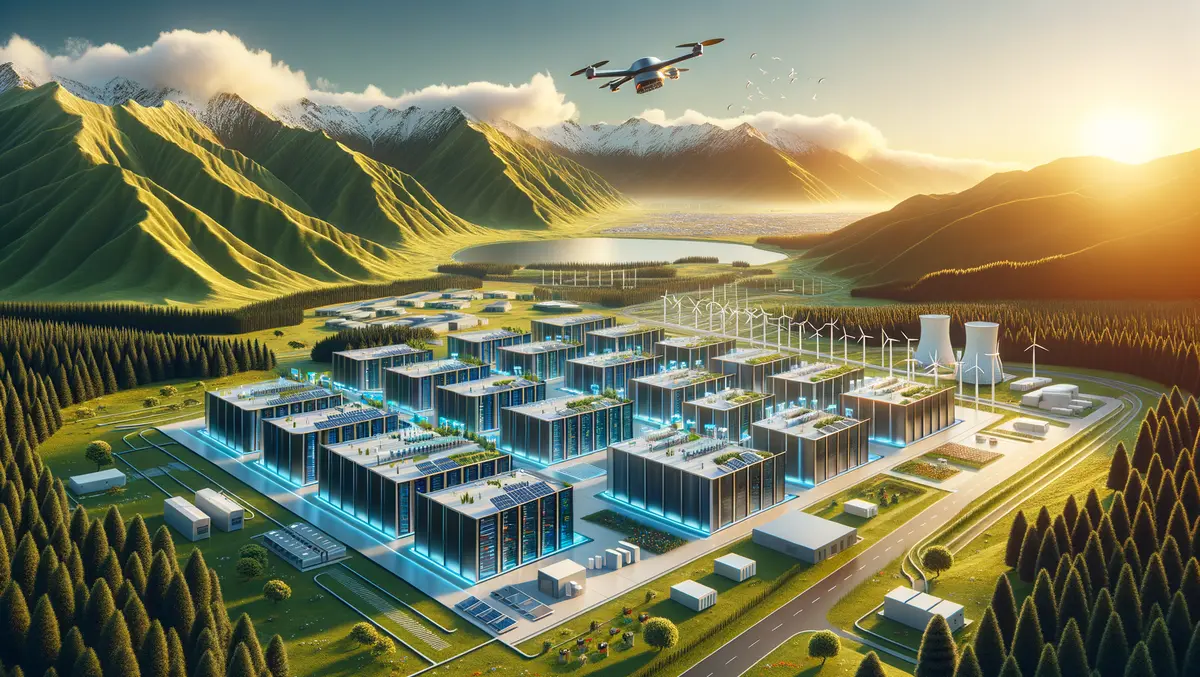
Navigating New Zealand's data centre landscape: Modular trends and opportunities
In an era where data drives innovation and fuels progress, the role of data centres is increasingly critical. These technological hubs are the heart of our digital world, supporting everything from cloud services to artificial intelligence. As we navigate the constantly evolving landscape of data, several mega-trends are shaping the future of data centres in New Zealand, and companies are looking for bespoke models.
Think of modular data centres as prefabricated buildings, built for scale and flexibility with standardised sizes to suit all scopes. The pre-engineered modules themselves showcase many advantages of bespoke centres – these units can be easily transported, stacked and interconnected. From the efficiency and speed of deployment through to customisation and space utilisation, you can select a prefabricated solution and build it to suit your application or destination.
A lot of tech giants like Amazon and Microsoft have come to New Zealand to build data centres, and as a result, we have hyperscale facilities. Today, some business transactions require low latency and fast data processing, hence, the demand for pre-engineered, modular, bespoke, and built-to-order data centres is increasing.
There are a range of key opportunities that most businesses need to grasp when they are seeking data centre solutions:
1. Making every square foot count. Space is precious, and bespoke modular data centres optimise space utilisation and maximise efficiency, fitting seamlessly into locations or existing infrastructure, whether in a busy city or a remote site.
2. Speed of data along the information highway. Milliseconds matter, and modular data centres offer lower data latency thanks to the proximity to data sources. This enables data processing to be faster, which improves service efficiency and customer experience.
3. Aligning efficiency with affordability in location costs. Cost-effectiveness is essential, and modular data centres strike the right balance by offering built-to-order sized capacities while ensuring reliability.
4. Sustainability. Bespoke modular data centres, designed with eco-consciousness in mind, play a pivotal role in reducing our environmental footprint, using energy-efficient designs, renewable energy sources, and responsible data management. Having data centres in regional locations has a myriad of sustainability advantages. These locations typically offer more direct access to renewable energy sources, and in certain regional areas (especially those with cooler climates) this can help reduce reliance on energy intensive cooling systems. Less densely populated areas ensure more equitable distribution of technological infrastructure across the landscape, encouraging accessibility and economic growth beyond urban centers.
5. Edge computing. The proliferation of Internet of Things (IoT) devices demands faster processing and reduced latency (delay in processing). Bespoke modular data centres, strategically located closer to data sources, enable lightning-fast data processing. From monitoring smart cities to optimising logistics or enhancing healthcare services, edge computing ensures real-time insights without compromising speed. Modular data centres can process time-sensitive data faster, addressing the demands of AI. When designed with edge computing, they can also turn collected data into applicable insights and can enable automated and predictive capabilities such as operational performance, cybersecurity, and threat analysis.
6. Hybrid cloud adoption offers the best of both worlds. Organisations are embracing hybrid models that blend public and private clouds. Bespoke modular data centres fit seamlessly into this ecosystem, adapting to changing workloads and ensuring flexibility and scalability.
7. Data privacy and security. Heightened awareness of data privacy and security drives demand for robust solutions. Modular data centres, customised to meet specific security requirements, safeguard critical information such as financial transactions, healthcare records, and sensitive research, and they enhance cybersecurity capabilities.
8. Scalability and flexibility. Data centres allow businesses to respond flexibly to expansion opportunity or market downturn, and by adapting to these needs ensure optimal resource utilisation and cost-effectiveness.
9. Adapting to AI and IoT technologies. The arrival of ChatGPT around 18 months ago showcased the remarkable capabilities of AI, machine learning, predictive analysis and IoT, which all require much more power and processing resources, seven times more than the existing search engine requires. These technologies are sharpening constantly, and we can only imagine the demands of efficiencies in coding and content generation that lie ahead.
Travel is an example of services where data centres, ubiquitous yet invisible, make all the services we use functional. When you visit an airport, behind the scenes, a bespoke modular data centre is orchestrating every stage of your travel experience, from check-in to baggage handling, real-time flight tracking, security surveillance, the boarding pass on your phone, and the movie you stream on-board the plane. All the data is connected and processed seamlessly to ensure you have the right information at the right time as you progress through the journey.
All this capability has emerged just in the last 10 years. Before that, airports had computer rooms with 10 or 20 racks of servers, and when the cloud came along around seven years ago, that was seen as "the answer" and great data migration began, with much of the function outsourced to hybrid. What we have seen, however, is that the cloud is just part of the answer: the need for rich on-site data management and storage has resurged with technology such as e-passports and facial recognition technology, so airports need those "computer rooms" – now bespoke modular data centres – which are a great solution.
The last decade has taught us that the future is truly hybrid – a mixture of the edge, the cloud, modular data solution and on-location data storage, because speed and latency demands mean that some businesses may need to have on-premise applications. However, modular data centres, regardless of size allow organisations to react, adapt and grow quickly with the future, while meeting customers' demands and maintaining sustainability commitments. This is especially true for enterprises with high volumes of data that need immediate processing, such as transport, healthcare, and retail facilities.

